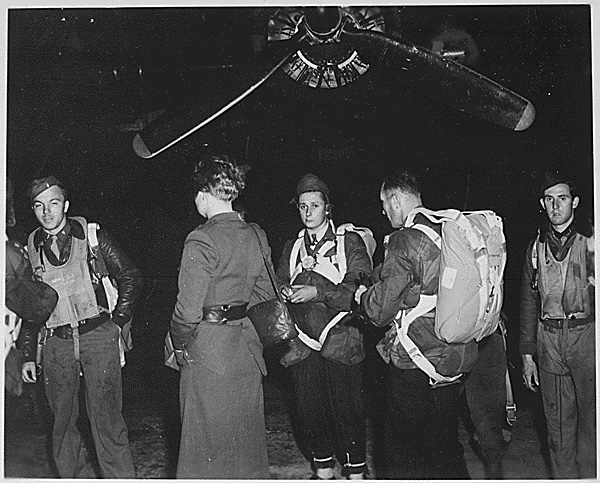When we walked through the gate of Al-Ahli Arab Hospital—the closest thing to a functional hospital left in the north—we saw two tan-colored buildings and a modern-looking tower topped with solar panels. Most of its windows were jagged with glass shards. Al-Ahli was founded in 1882 by Anglican missionaries. A plaque commemorated a 2011 renovation sponsored by U.S.A.I.D. Mule wagons were constantly dropping off new patients, many of whom had external-fixation pins protruding from their arms or legs. A chapel, riddled with shrapnel damage, had been turned into a medical ward. Ezz led us to a small E.R. that, despite the ceasefire, was at capacity. There were no ventilators, defibrillators, or I.V. pumps. I counted two cardiac monitors and eighteen cots. “Two monitors for half a million people,” Ezz said. “Unbelievable.”
Ezz introduced me to Fadil Naim, who directs the facility. The hospital had space for about fifty inpatients but routinely cared for hundreds, so some slept outside. Naim was the only senior orthopedic surgeon in the hospital, but he’d gotten help by training whomever he could. “I have a third-year medical student that can now do orthopedic surgery,” he said.
Early in the conflict, Naim called Ezz with terrible news. Ezz’s mother had arrived in the Al-Ahli emergency room. His grandparents’ house had been bombed. After rescuers arrived, a second bomb exploded nearby, Ezz said. His mother survived, but twenty of his family members, including his father, brother, grandmother, niece, and sister-in-law, were killed. “Some of them are still buried under the rubble,” Ezz told me.
Many of the houses in Beit Lahia, in the northernmost part of Gaza, were not simply damaged but flattened. The Indonesian Hospital, a stately four-story building, was one of the few structures in the vicinity still standing, though it, too, had reportedly been shelled. Sparrows darted from one pile of rubble to another; I heard what was probably an unexploded bomb detonate in the distance. Marwan Sultan, a cardiologist and the director of the hospital, led us through darkened hallways, his white coat billowing behind him.
Only the E.R. remained operational. Doctors had performed neurosurgery in a dental chair and amputations on the ground, Sultan said. Outside, he showed me the wreckage of several generators and an oxygen station. Israeli forces “destroyed the lungs of the hospital,” he said. I saw a hole in the side of the building where he said a tank had driven through the wall. In the hospital courtyard, there were grave markers made from ceiling tiles. An I.D.F. spokesperson said that weapons and tunnels were found at the facility.
Sultan led me upstairs, to the I.C.U., where wind blew through broken windows. He wanted to show me something that he had discovered after Israeli forces left the hospital. He pointed to a cardiac monitor near a wall. It appeared to have a bullet hole in its screen. Next to it was an EKG machine whose screen had been smashed.
We entered a large storage room in the corner of the I.C.U. which was crammed with medical devices: ultrasound machines, I.V. pumps, dialysis machines, blood-pressure monitors. Each had apparently been destroyed by a bullet—not in a pattern one would expect from random shooting but, rather, methodically. I was stunned. I couldn’t think of any possible military justification for destroying lifesaving equipment. When I asked the I.D.F. for comment, the spokesperson said, “Claims that the IDF deliberately targets medical equipment are unequivocally false.”
The ceasefire in Gaza ultimately lasted just two months. In February, I flew back to the U.S. On March 2nd, Israel blocked all humanitarian aid, including medical supplies, from entering Gaza, in an effort to pressure Hamas into accepting revised ceasefire terms. On the night of March 18th, it resumed its bombing campaign. By morning, more than four hundred people had been killed, according to Gaza’s health ministry. The hospitals in the north soon had too many patients and too few supplies to treat them, Ezz told me in a text. “Every day we face impossible choices,” he wrote. This past week, the I.D.F. warned Al-Ahli’s medical staff to evacuate patients; twenty minutes later, missiles disabled the emergency department and destroyed a genetics laboratory. The I.D.F. said that Hamas was operating there, which the group denied.
When bombs began falling in Khan Younis, Feroze Sidhwa, an American trauma surgeon who had been to Gaza before, was in Nasser Hospital, sleeping in the same room where I had stayed. I knew him from a group chat of health-care workers who had gone on medical missions like mine. Sidhwa, a stoic man with short hair, woke up when the pressure wave from an explosion blew the door open. He rushed to the E.R.
In the hours that followed, two hundred and twenty-one people were brought to the hospital. Ninety-two were soon pronounced dead. Sidhwa searched for patients who needed emergency surgery. “It was chaos,” he said. “The rooms were full of kids dying on the floor, bleeding, screaming, crying.” Some patients were alive but beyond saving with the hospital’s limited resources. Sidhwa saw several children with severe brain injuries. The hospital had no neurosurgeon, so there was little that could be done for them. After evaluating a young girl, he pointed her relative to a specific part of the E.R., where dying patients were sent. “Pick her up and take her over there, and just stay with her,” he remembers saying.
The next patient he evaluated was a five-year-old girl with shrapnel wounds to the chest, abdomen, and head. The E.R., which had been empty when I visited, in January, was so crowded with patients that he couldn’t push her gurney to the CT scanner. Instead, he picked her up and carried her. Her scans suggested that her brain injuries were survivable, so he carried her to the operating room and repaired her internal abdominal injuries. (Five days later, she would be talking again.)
He proceeded to treat a tennis-ball-size hole in a woman’s back, another patient’s lacerated aorta, and a five-year-old boy whose entire body had been sprayed with shrapnel, causing cardiac arrest. One of Sidhwa’s colleagues opened the boy’s chest as though it were a clamshell and sewed up holes in the ventricles of his heart. The colleague re-started the boy’s heart by injecting epinephrine into it, and together they repaired damage to the boy’s liver, diaphragm, colon, stomach, and kidney. Despite their efforts, the boy died.
Sidhwa said that one of his last patients that night was a sixteen-year-old boy named Ibrahim, who had sustained intestinal injuries from shrapnel. Sidhwa stitched up the boy’s rectum and created an ostomy—a hole that exits the abdomen—to allow his digestive tract to heal. Ibrahim had black hair and looked thin from malnutrition. He was expected to make a full recovery. The boy’s father seemed to know only two words in English—“thank you”—and kept repeating them. “It was sweet,” Sidhwa told me.
Five days later, Ibrahim was almost ready to be sent home. That afternoon, Sidhwa was on his way to check on him when a colleague flagged him down. As they were discussing a patient, an explosion rocked the hospital. Sidhwa’s Palestinian colleagues pulled him away from the windows; the building had been hit. The I.D.F later said that the strike had targeted a senior Hamas political leader named Ismail Barhoum. A spokesperson alleged that Barhoum was “in the hospital to commit acts of terrorism.” Sidhwa called this claim “fucking ridiculous.” Barhoum was related to Ibrahim, Sidhwa told me, so they received medical treatment in the same room. “He was wounded and he was here as a patient,” he said. “I’m telling you this as an eyewitness.”
After the attack, Sidhwa again raced to the E.R. “We didn’t know if the Israelis were going to raid the hospital, or bomb it again,” he told me. Eventually, several men rushed in, carrying a teen-age boy in a bedsheet. They brought him into the trauma bay and set him down on a gurney. When Sidhwa drew the sheet back, he was shocked. The patient’s abdomen was shredded and his bowels were spilling out. It was Ibrahim, and he was dead. ♦
Premium IPTV Experience with line4k
Experience the ultimate entertainment with our premium IPTV service. Watch your favorite channels, movies, and sports events in stunning 4K quality. Enjoy seamless streaming with zero buffering and access to over 10,000+ channels worldwide.
















